Is Caltrans poised to destroy an Indigenous burial site? - Los Angeles Times
Category: News & Politics
Via: evilgenius • 11 months ago • 11 commentsBy: Louis SahagunStaff Writer (Los Angeles Times)
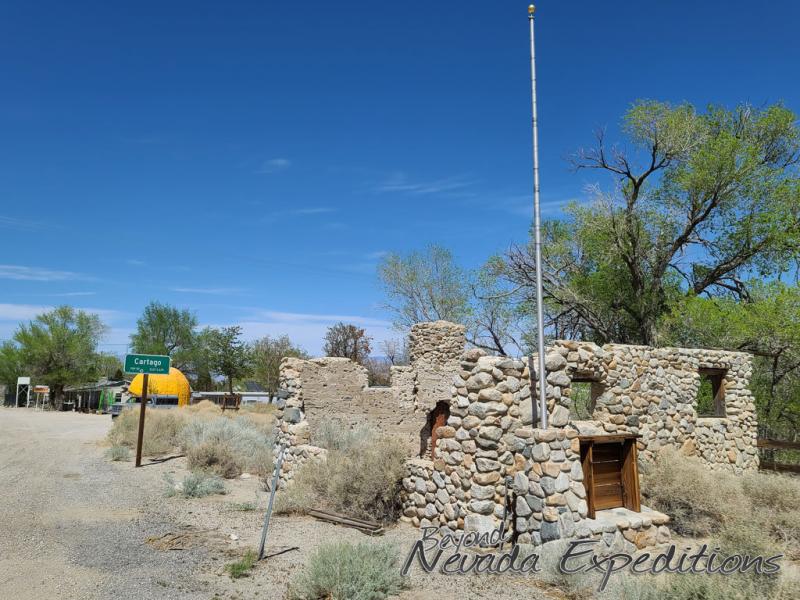


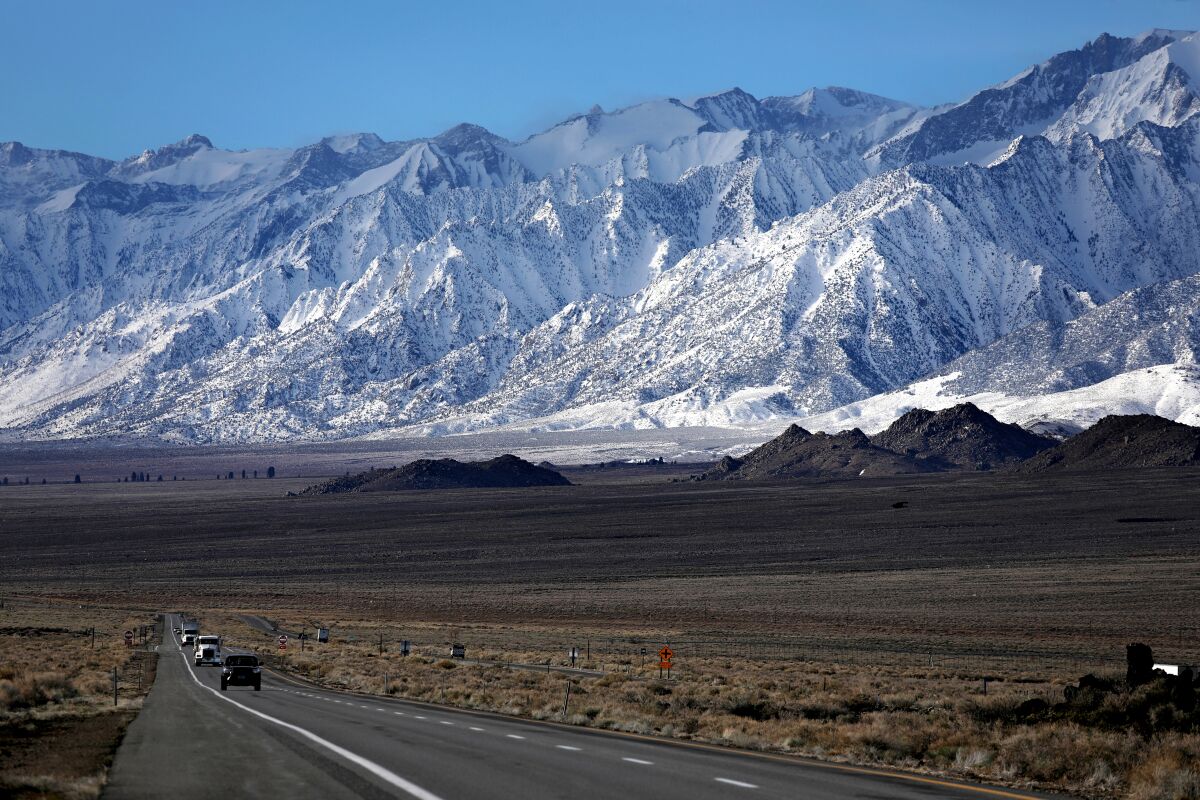
CARTAGO, Calif. —
It didn't take long for a team of highway archaeologists to mark their first find while searching for buried human remains on an aging stretch of U.S. Highway 395 that cuts along the eastern flank of the Sierra Nevada range.
That alone was enough to concern local tribal leaders, but they went on to hit more bones missed by earlier archaeological surveys required to start construction of a $69.7-million Caltrans project to convert 12.6 miles of 395 from a two-lane road to a safer four-lane expressway.
State and federal laws prohibit public disclosure of information related to the locations of Native American cultural places to reduce their vulnerability to various types of theft, including grave robbing. But as of last week, tribal leaders say, more than 30tangled human skeletons had been unearthed at the site near the Inyo County community of Cartago, many of them adorned with artifacts: glass beads, abalone shells and arrowheads.
Now, as nearby bulldozers lumber over huge mounds of excavated earth, tribal historic preservation officers are demanding that the California Department of Transportation halt construction and realign the project to avoid the gravesites.

"We're saying, 'Stop!' Your gigantic highway project is disrupting the peace of untold numbers of ancestors in a place that had gone undisturbed for thousands of years," said Sean Scruggs, tribal historic officer for the Fort Independence Indian Community of Paiute Indians.
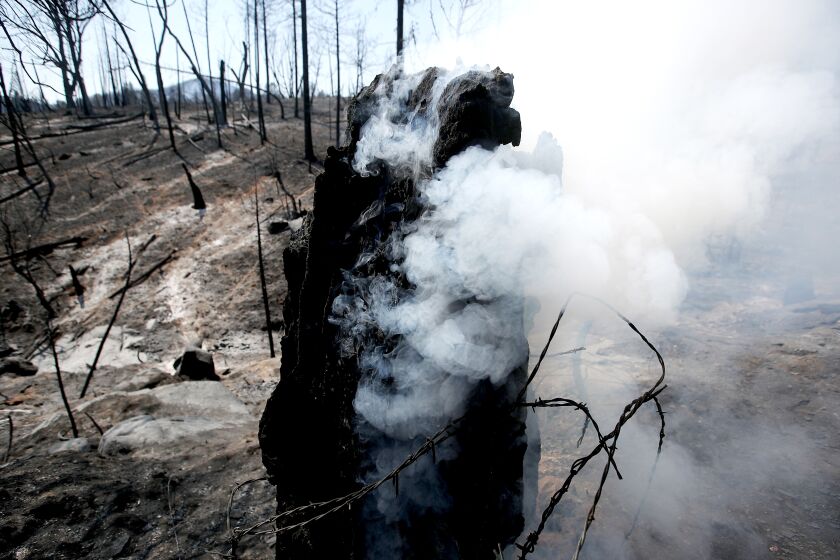
California
This tribe was barred from cultural burning for decades — then a fire hit their community
Members of the Southern Sierra Miwuk Nation became the latest Indigenous tribe to watch homes burn despite knowing it could have been avoided.
"How many human remains must be unearthed before Caltrans decides it is time to respect our advice and perspective?" he asked.
Kathy Jefferson Bancroft, tribal historic preservation officer for the Lone Pine Paiute Shoshone Reservation, said, "We don't want this to become another sensational case of horrific desecration."
"We have been trying to work with Caltrans to find a creative solution, but have yet to see a proposal that aligns with tribal interests. This needs to change," she said.
The project got off to a rocky start when it was proposed in 1997, with many tribal leaders warning that nearly every slope, sage plain and shoreline in the region held evidence of Indigenous people who knew it as a kingdom of irrigated villages and plentiful game surrounded by canyons and crags sculpted by storms and flash floods.
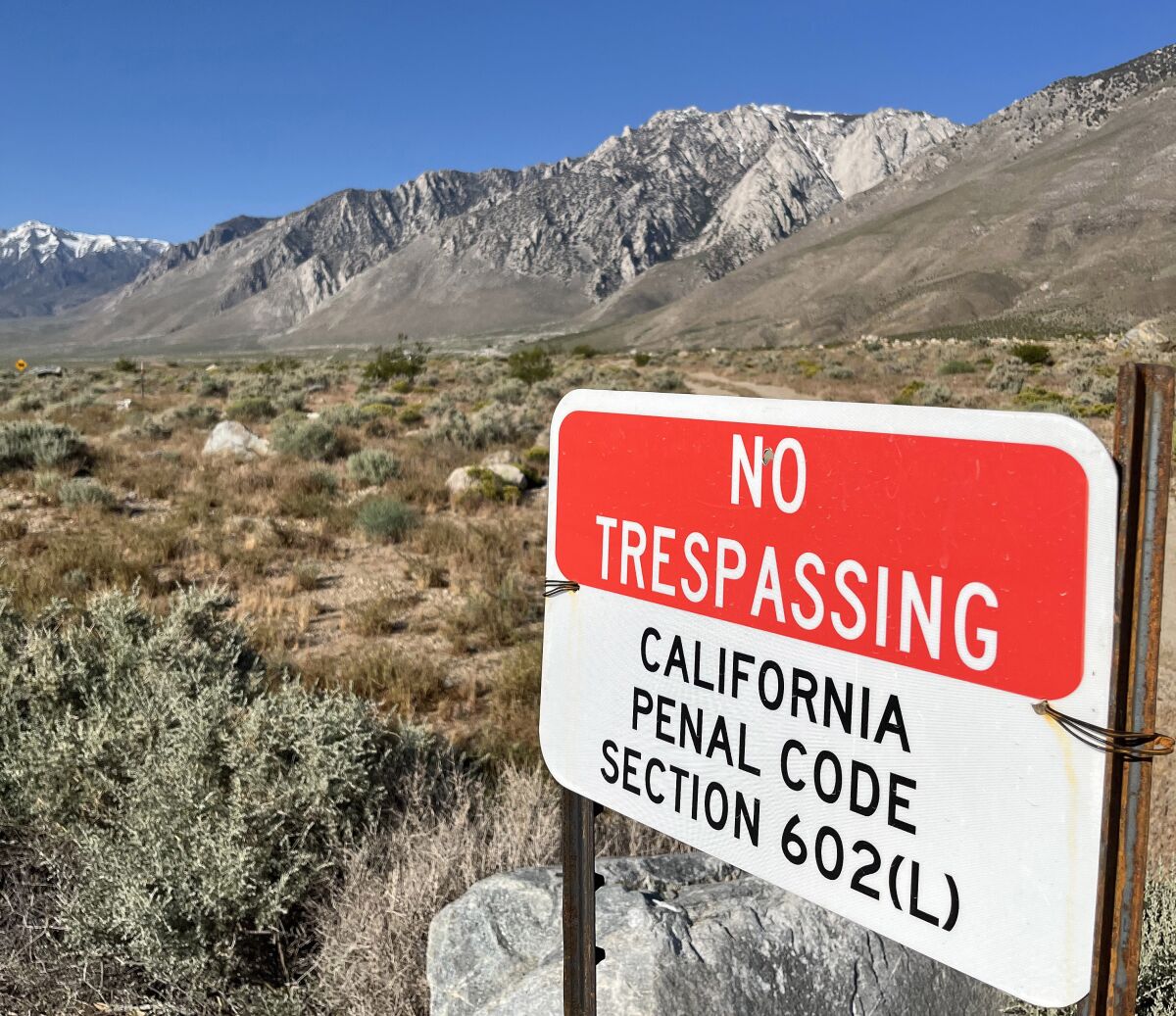
"We've had at least a hundred meetings with Caltrans," Bancroft said. "But formal consultation was never completed regarding design issues that have never been addressed."
The highway project, which is within a Caltrans right of way, has been identified as a priority. But unless the state government agency yields to tribal concerns, they are headed for a showdown of complicated and competing values.
The colliding interests are not new.
In 2012, state coastal regulators fined a property owner $430,000 for unearthing artifacts at a 9,000-year-old Native American village site near Bolsa Chica wetlands in Huntington Beach. Native American groups with ties to the land said the penalty was not severe enough.
That same year, the Colorado River Indian Tribes unsuccessfully asked the federal government to slow down its development of the $1-billion Genesis solar project in the Mojave Desert because of the discovery of human remains missed by archaeological surveys in a rush to build.
In 2019, construction of a San Diego Freeway widening project was halted immediately after Native American remains were discovered during excavations. Orange County Transportation Authority officials consulted with the California Native American Heritage Commission on how to proceed.
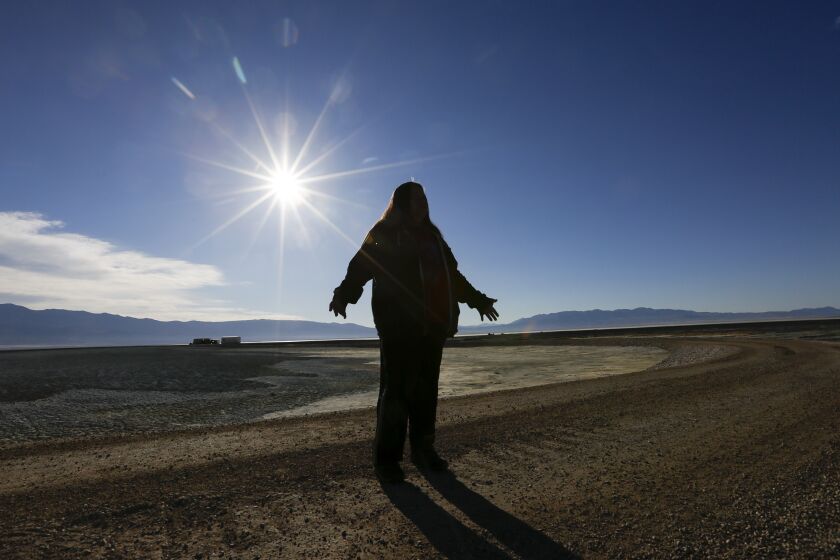
Climate & Environment
Owens Valley tribes honor a legacy of 'beauty and suffering' with historic site nomination
Indigenous tribes nominate section of Owens Lake for the California Register of Historical Resources and the National Register of Historic Places.
The Olancha-Cartago 4-Lane Expressway project will pass west of the community of Olancha, cross the Los Angeles Aqueduct and continue through the community of Cartago to close the gap between existing four-lane sections of the route vital to the eastern Sierra's regional economy.

Construction is roughly 40% complete, Caltrans officials said, and expected to conclude sometime next year, barring unforeseen problems.
The worksite overlooks the nearby Owens Lake playa, an arid, flat expanse best known as the focal point of a historic feud that began in the early 1900s, when Los Angeles city agents quietly bought up ranchlands and water rights for an aqueduct to quench the thirst of the growing metropolis 200 miles to the south.
L.A. drained so much water via the aqueduct system that the 110-square-mile lake dried up, making it nearly impossible for local ranchers and farmers to make a living — a scandal that was dramatized in the 1974 film classic "Chinatown."
For Native Americans, however, the area was once an essential part of their religion, culture and history until the late 1800s — before U.S. troops were sent in to protect white settlers and tribal lands and water were in effect stolen.
As part of an effort to present a fuller picture of the region's importance to the Indigenous people of Owens Valley, five local tribes have nominated 186 square miles of the lake bed for listing in the California Register of Historical Resources and the National Register of Historic Places.
Those tribes now want the burial site in the path of Caltrans' highway project deemed off-limits to further construction until a solution agreeable to all sides is reached.
That won't be easy. Caltrans in April offered a proposal to curve the disputed section of highway around the burial site. But it wouldn't move the highway far enough away to satisfy tribal leaders, who are calling for a clearance of at least half a mile to a mile.
The tribes insist they are not against the highway improvement project. The problem is that it was approved for construction, they say, without their consultation.
Instead, they have watched with mounting anger and frustration as Caltrans archaeologists and road crews bearing hard hats, shovels and buckets fan out each morning to search for remains of their ancestors.
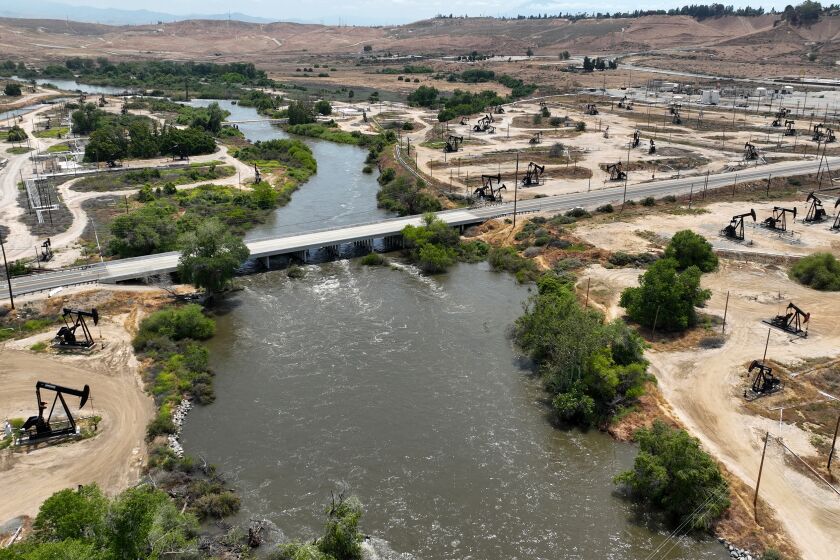
Climate & Environment
Chevron scrambles to batten down oil fields amid threat of Kern River flooding
In areas where pumpjacks bob along the banks of the Kern River, Chevron has been shutting down oil wells, pipelines and electrical power.
The yellow-vested teams work in areas slated for construction, carefully digging 10 feet or more into hard alluvial soil and pushing shovelfuls of dirt through course-mesh screens to gather the smallest pieces of evidence.
The work is conducted with a Native American monitor present, a requirement under state law.
"As soon as any remains are discovered, Caltrans stops work, calls the coroner, and must follow the protocol as outlined in the Native American Graves Protection and Repatriation Act, and the California Public Resources Code that outlines the process," the agency said in a prepared statement.
A March 15 letter from the chairwoman of the Lone Pine Paiute reservation was pleading and tough. It requested formal consultation with both Caltrans and the Federal Highway Administration regarding "the way the project has been designed and implemented."
On Thursday, tribal officers finally received some good news: Caltrans announced that it has "halted all construction activities in the area in question," including its search for human remains.
"Caltrans is committed to protecting tribal cultural resources," it said. "When concerns are raised, there are a variety of tools we can use, up to and including project redesign."
"That's a good start," said Scruggs of the Fort Independence Indian Community of Paiute Indians, "but we've still got a lot of nation-to-nation consultation ahead of us."
"All we want," he added, "is prior informed consent before they launch something of this scale in our ancestral home."





Hey! Let's put a highway right through sacred land. What could go wrong?
More potholes than anyone could ever imagine
they built a bunch of mansions on top of indian burial grounds 2 miles from my home.
They just don't respect the resting places of the dead
Is it sacred, though? It doesn’t seem like anybody had a clue these bodies were even there before CalTrans dug them up.
They kidnap a little girl and take her into the TV.
I think I read somewhere the locals told them there were burial sites there. It's curious that the scans for burial sites didn't turn anything up until digging started though. From a casual search online (I'd really have to start reading and I don't have time right now) it looks very difficult to dig anywhere in that general area and not turn up either bones or artifacts.
HAHAHA! I was thinking that when I wrote the first post.
By various laws, Fed and state, exploratory digging is allowed - BUT the instant potential discovery is made, it all stops 'til the Tribal/state/Fed archaeologists conduct and publish their assessments and the lead agency adjusts their EIS direction/model.
Native history in that area goes back tens of thousands of years. I have traveled 395 many times over the years. The stark beauty of the area and the ancient history of the original people are everywhere.
Hopefully, CalTrans will follow through with their latest decision.
395 will take you to beautiful and historic areas Mono Lake, Owens Lake and Lone Pine (Manzanar) while an internment camp for American Japanese isn't beautiful it is a reminder and a place to reflect on what transpired.
From there 395 will take you into the June Lake loop and on into Nevada.
It would have been better had the local tribes been consulted with before rather than after.
CalTrans project is partially funded by DOT. Any federal project that has the "potential" to impact a Native American site is REQUIRED, by the National Environmental Policy Act (NEPA), to conduct consultation with the potentially affected Native American entity at a minimum of 8 times during the planning, scoping, review and approval process.
When I was the Cultural Relations/Tribal Relations Program Manager for the Western Regional Environmental Office for the AF, I found that CalTran was "usually" a good working partner. But, that all depended on the pressures from Sacramento's WH and the additional financing sources for the projects.
The Cali tribes/nations have been making great headway with the state on their consultation processes, but, again, depending on the various funding sources, consultation will sometimes fall through the cracks.
However, if the tribes can show that the Environmental Impact Statement was not processed or followed as written, DOT/BIA/DOJ is right around the corner and their "judges" aren't as lenient as the Cali judges are during arbitration/consultation.
I’ve been down this section of road - I would guess - a couple hundred times in my life. Cartago and nearby Olancha are the proverbial “wide spots in the road.” I think there’s less than 100 people in each “town.”
I’m honestly surprised they’re bothering to add lanes right there. Seems unnecessary. Lots of sections of 395 go from 4 lanes to 2. It’s usually not a big deal.